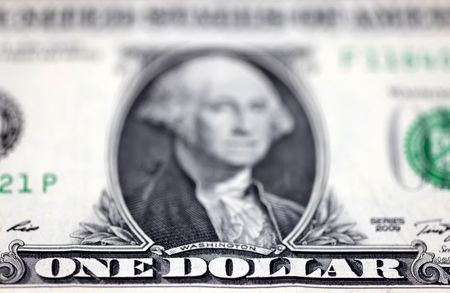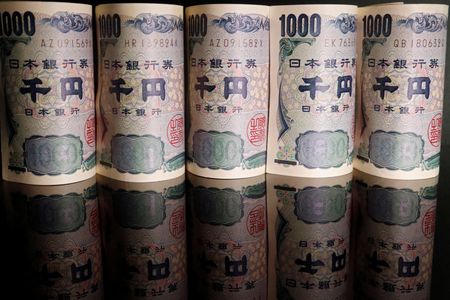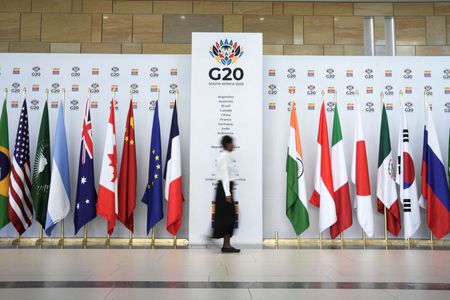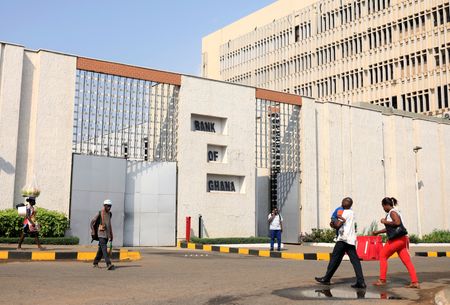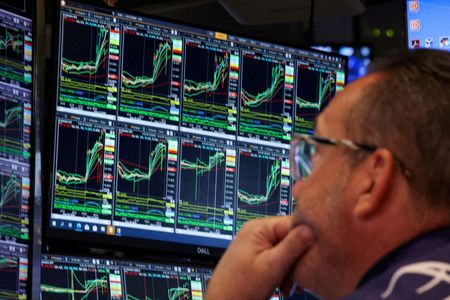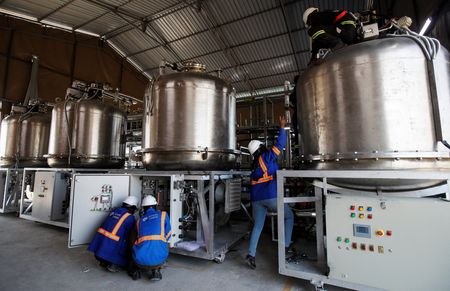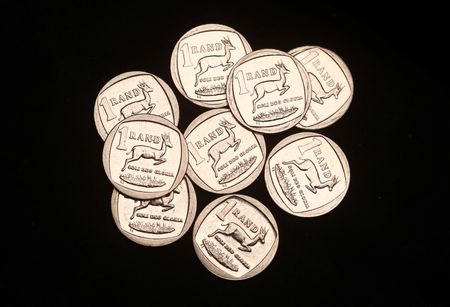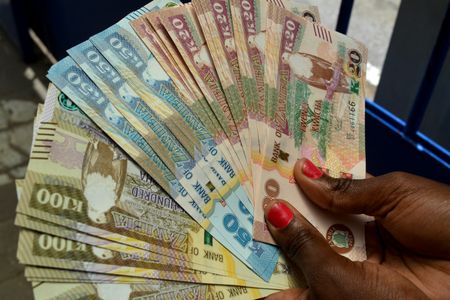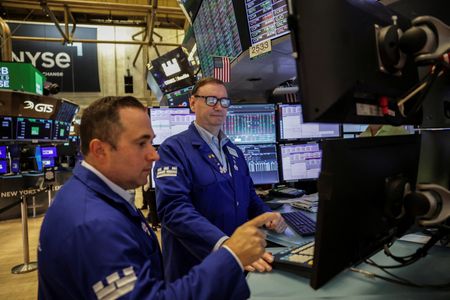By Karen Brettell
NEW YORK (Reuters) -The dollar rebounded broadly on Thursday following a turbulent session on Wednesday when U.S. President Donald Trump denied reports that he was planning to fire Federal Reserve Chair Jerome Powell.
The dollar has rallied this month in what analysts say is largely consolidation following a sharp selloff for most of this year. The dollar index remains down 9% year-to-date. Rising Treasury yields this month are supporting the dollar’s rebound.
“After having a historic sell-off in the first half, the dollar has begun the second half on firmer footing. It looks like mostly short covering backed by these firmer U.S. interest rates,” said Marc Chandler, chief market strategist at Bannockburn Global Forex in New York.
The dollar extended gains on Thursday after data showed U.S. retail sales rebounded more than expected in June, while the number of Americans filing new applications for jobless benefits fell last week.
However, the greenback quickly fell back to trade close to where it was before the data, which Chandler said shows “the lack of near-term conviction.”
Investors are weighing multiple factors that could influence market direction, including the economic impact of Trump’s tariff policies, the U.S. fiscal and debt outlook, and the Fed’s independence.
The dollar tumbled on Wednesday on reports that Trump was planning to fire Powell soon, before paring losses when Trump denied the news. Trump has said repeatedly that interest rates should be at 1% or lower.
Former Fed Governor Kevin Warsh, seen as a potential successor to Powell, said on Thursday there needs to be a new accord between the Treasury Department and the U.S. central bank, referencing a 1951 pact that separated federal debt management from monetary policy.
The dollar index, which measures the greenback against a basket of currencies including the yen and the euro, was last up 0.41% on the day at 98.75, with the euro down 0.45% at $1.1582. The single currency earlier reached $1.1555, the lowest level since June 23.
In other currencies, sterling weakened after data showed British pay growth slowing in May and employee numbers dropping further last month.
The British pound was last down 0.1% at $1.3405.
Concerns also mounted over a pivotal election in Japan and a still elusive trade deal with the U.S. to avoid a punishing rise in tariffs.
Polls showed Prime Minister Shigeru Ishiba’s coalition was in danger of losing its majority in the upper house.
Japan’s top trade negotiator, Ryosei Akazawa, held talks with U.S. Commerce Secretary Howard Lutnick on tariffs on Thursday, as Tokyo races to avert a 25% levy that will be imposed unless a deal is clinched by an August 1 deadline.
The yen weakened 0.58% against the greenback to 148.73 per dollar after touching its weakest level since April 3 in the previous session.
The Australian dollar slid after jobs data badly missed forecasts and unemployment hit highs not seen since late 2021.
The Aussie was last down 0.64% versus the greenback at $0.6484.
In cryptocurrencies, bitcoin fell 0.22% to $119,676.
(Reporting by Karen Brettell; Additional reporting by Rocky Swift, Lucy Raitano, William Maclean; Editing by Leslie Adler)

